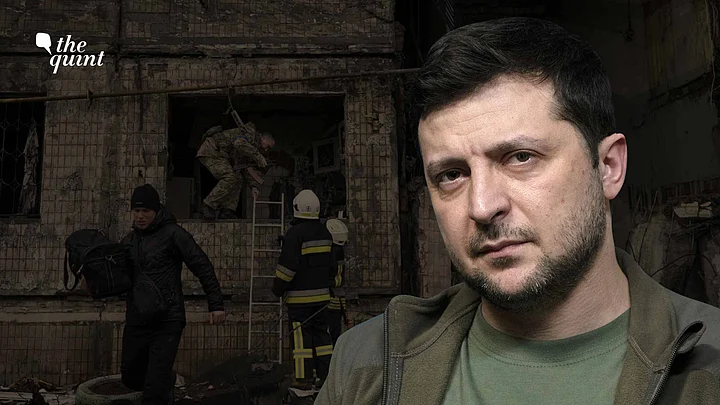The World Bank announced on Sunday, 10 April, that war-torn Ukraine's gross domestic product (GDP) is projected to shrink by 45.1 percent in 2022.
The Russian economy won't be spared of damage either, with the WB forecast predicting a shrink by 11.2 percent.
"The war is having a devastating impact on human life and causing economic destruction in both countries, and will lead to significant economic losses in the Europe and Central Asia region and the rest of the world."World Bank
The report also mentioned the worst-case scenario, stating that "the downside scenario also assumes a shock to financial confidence, a 20 percent contraction in Russia's GDP, and a 75 percent contraction in Ukraine's GDP."
It also warned of a severe recession in several countries in close proximity to the conflict, as discussed in the last section.
Europe's Breadbasket
Ukraine's economy relies heavily on agriculture. Its fertile soil makes up around 33 percent of arable land in all of Europe.
Being a net exporter of agricultural commodities, Ukraine's agricultural sector plays a key role in the global supply chain, but more importantly, in its domestic economy.
It is the largest exporter of sunflower oil, the fourth largest exporter of corn, and also the fifth largest exporter of wheat in the world (the largest is Russia).
Thanks to the Russian assault, Ukraine has millions of tons of corn and million tons of wheat that it cannot export via the routes it ordinarily utilises (which are primarily by sea).
Ports account for 90 percent of the exports out of Ukraine, and Russia's military has carried out a complete blockade of key ports in the country.
As exports plummet, so does Ukraine's economy.
Grain exports alongwith other economic activity have "become impossible in large swaths of the country due to heavy damage to infrastructure," according to Anna Bjerde, World Bank vice president for Europe and Central Asia.
If all access to the Black Sea is severed by the attacking Russian troops, then the agricultural sector could be hit even harder by the war, according to the World Bank report.
The good news for Ukraine is that the Zelenskyy government has been working with the European Union to ensure that land routes can replace sea routes for the continuation of exports.
The government has claimed that 80 percent of exports can still leave the country.
Rebuilding the Economy
Wirtschaftswunder (economic miracle) was the phrase used for the economic reconstruction of West Germany after the Second World War.
What would be the costs of a Ukrainian wirtschaftswunder?
Scholars working for the Centre for Economic Policy Research (CEPR), a pan‐European non‐profit organisation with a network of economists, estimate that the total cost of rebuilding Ukraine would be between $220 billion and $540 billion.
An analysis by The Economist argues that there will be three main aspects of rebuilding Ukraine after the war:
Clearing war-torn areas of landmines and other explosive debris
Ensuring food and shelter for those left in the country
Reconstructing devastated infrastructure and industrial facilities
The Kyiv School of Economics has estimated that the destrucation caused to power plants, factories, bridges, and roads among other infrastructures, is worth approximately $50 billion.
Money will have to come from western allies like the US (which has already provided $7 billion), the UK, and the EU.
Finally, the post-war economy will have to be boosted with high levels of trade and investments.
The Impact on Eastern & Central Europe
Due to the economic consequences of the war, the GDP of Eastern Europe alone may fall by 30.7 percent.
The fall is especially noteworthy because the region was projected to grow at 1.4 percent before the invasion began on 24 February.
Some of the countries that are at high risk are Belarus, Kyrgyz Republic, Moldova, and Tajikistan.
Sanctions on Belarus, led by Aleksandr Lukashenko, a key (if not the only) ally of Russian President Vladimir Putin, will also affect the economy of the region.
Moldova is likely to be the worst-affected country outside of Ukraine because of its geography, and because its small economy is closely linked to the economies of the two warring nations.
With respect to Central Europe, comprising of countries like Bulgaria, Croatia, Hungary, Poland, and Romania, economic growth is projected to drop to 3.5 percent from the 4.7 percent previously projected, due to the refugee crisis, inflation, and falling demand.
(With inputs from Reuters and The Economist)
